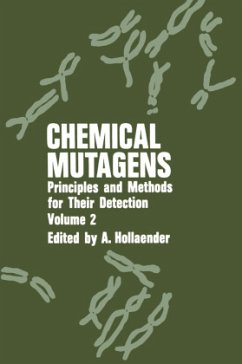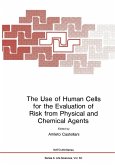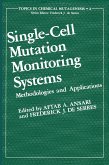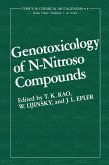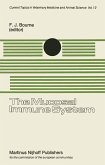Chemical Mutagens
Principles and Methods for Their Detection: Volume 2
Herausgegeben von Hollaender, Alexander
Chemical Mutagens
Principles and Methods for Their Detection: Volume 2
Herausgegeben von Hollaender, Alexander
- Broschiertes Buch
- Merkliste
- Auf die Merkliste
- Bewerten Bewerten
- Teilen
- Produkt teilen
- Produkterinnerung
- Produkterinnerung
The best protection against environmental mutagens is to identify them before they ever come into general use. But it is always possible that some substance will escape detection and affect a large number of persons without this being realized until later generations. This article considers ways in which such a genetic emergency might be promptly detected. A mutation-detecting system should be relevant in that it tests for effects that are as closely related as possible to those that are feared. It should be sensitive enough to detect a moderate increase in mutation rate, able to discover the…mehr
Andere Kunden interessierten sich auch für
![Induced Mutagenesis Induced Mutagenesis]() Induced Mutagenesis39,99 €
Induced Mutagenesis39,99 €![Principles of Genetic Toxicology Principles of Genetic Toxicology]() David BrusickPrinciples of Genetic Toxicology77,99 €
David BrusickPrinciples of Genetic Toxicology77,99 €![The Use of Human Cells for the Evaluation of Risk from Physical and Chemical Agents The Use of Human Cells for the Evaluation of Risk from Physical and Chemical Agents]() The Use of Human Cells for the Evaluation of Risk from Physical and Chemical Agents39,99 €
The Use of Human Cells for the Evaluation of Risk from Physical and Chemical Agents39,99 €![Organ and Species Specificity in Chemical Carcinogenesis Organ and Species Specificity in Chemical Carcinogenesis]() Organ and Species Specificity in Chemical Carcinogenesis40,99 €
Organ and Species Specificity in Chemical Carcinogenesis40,99 €![Single-Cell Mutation Monitoring Systems Single-Cell Mutation Monitoring Systems]() Aftab A. AnsariSingle-Cell Mutation Monitoring Systems39,99 €
Aftab A. AnsariSingle-Cell Mutation Monitoring Systems39,99 €![Genotoxicology of N-Nitroso Compounds Genotoxicology of N-Nitroso Compounds]() Genotoxicology of N-Nitroso Compounds39,99 €
Genotoxicology of N-Nitroso Compounds39,99 €![The Mucosal Immune System The Mucosal Immune System]() The Mucosal Immune System40,99 €
The Mucosal Immune System40,99 €-
-
-
The best protection against environmental mutagens is to identify them before they ever come into general use. But it is always possible that some substance will escape detection and affect a large number of persons without this being realized until later generations. This article considers ways in which such a genetic emergency might be promptly detected. A mutation-detecting system should be relevant in that it tests for effects that are as closely related as possible to those that are feared. It should be sensitive enough to detect a moderate increase in mutation rate, able to discover the increase promptly before more damage is done, responsive to various kinds of mutational events, and designed in such a way as to maxi mize the probability that the Gause of an increase can be found. Methods based on germinal mutation necessarily involve enormous numbers of persons and tests. On the other hand, with somatic mutations the individual cell becomes the unit of measurement rather than the in dividual person. For this reason, I think that somatic tests are preferable to germinal tests, despite the fact that it is germinal mutations which are feared.
Produktdetails
- Produktdetails
- Verlag: Springer / Springer US / Springer, Berlin
- Artikelnr. des Verlages: 978-1-4615-8971-6
- Seitenzahl: 368
- Erscheinungstermin: 10. September 2012
- Englisch
- Abmessung: 229mm x 152mm x 20mm
- Gewicht: 538g
- ISBN-13: 9781461589716
- ISBN-10: 1461589711
- Artikelnr.: 36936907
- Herstellerkennzeichnung
- Springer-Verlag GmbH
- Tiergartenstr. 17
- 69121 Heidelberg
- ProductSafety@springernature.com
- Verlag: Springer / Springer US / Springer, Berlin
- Artikelnr. des Verlages: 978-1-4615-8971-6
- Seitenzahl: 368
- Erscheinungstermin: 10. September 2012
- Englisch
- Abmessung: 229mm x 152mm x 20mm
- Gewicht: 538g
- ISBN-13: 9781461589716
- ISBN-10: 1461589711
- Artikelnr.: 36936907
- Herstellerkennzeichnung
- Springer-Verlag GmbH
- Tiergartenstr. 17
- 69121 Heidelberg
- ProductSafety@springernature.com
of Volume 2.- 11 Measurement of Recessive Lethal Damage Over the Entire Genome and at Two Specific Loci in the ad-3 Region of a Two-Component Heterokaryon of Neurospora Crassa.- I. Introduction.- II. Measurement of the Genetic Effects of Mutagenic Treatment.- III. Characterization of Presumptive ad-3 Mutants.- IV. Media and Chemical Solutions.- V. References.- 12 Aspergillus.- I. Introduction.- II. Life Cycle and Genetic Analysis.- III. Mutation.- IV. Conclusions.- V. References.- 13 Higher Plants.- I. Introduction.- II. Test Systems.- III. Compounds Tested for Mutagenic Activity by Treatment of Seeds.- IV. Special Techniques That Have a Higher Resolving Power.- V. General Evaluation.- VI. Acknowledgments.- VII. References.- 14 Procedures for Culturing Diploid Cells and Preparation of Meiotic Chromosomes from Dwarf Species of Hamsters.- I. Introduction.- II. Background Information.- III. Handling the Diploid Cell.- IV. Spermatogonial and Meiotic Chromosome Preparations.- V. Bone Marrow Biopsy Procedure.- VI. Discussion.- VII. Acknowledgments.- VIII. References.- 15 Induction and Analysis of Gene Mutations in Mammalian Cells in Culture.- I. Introduction.- II. The Cell Material.- III. Utilization of In Vivo Markers.- IV. Detection of Recessive Mutations in Cell Cultures.- VI. Characterization of Newly Isolated Variants.- VII. Procedure for Mutation Induction.- VIII. Concluding Remarks.- IX. Acknowledgments.- X. References.- 16 Inducing Mutations with Chemicals in Habrobracon.- I. Introduction.- II. Maintenance of Habrobracon and Ephestia.- III. Scheme for Mutational Analysis.- IV. Application of Mutagens.- V. Conclusions.- VI. References.- 17 The Detection of Mutations in Drosophila melanogaster.- I. Introduction.- II. Advantages of Drosophila as a Test Organism.- III. Limitations of Drosophila as a Test Organism.- IV. Lethal Tests.- V. Tests for Recessive Visible Mutants.- VI. Tests for Chromosomal Rearrangements.- VII. Tests for Loss of X or Y Chromosomes.- VIII. Tests for Dominant Lethals.- IX. Tests for Half-Translocations.- X. Staging of Germ Cells.- XI. Techniques for Collecting Flies of a Desired Sex.- XII. Review of Literature.- XIII. Summary.- XIV. References.- 18 Root Tips for Studying the Effects of Chemicals on Chromosomes.- I. The Material.- II. Treatment of Root Tips with Chemicals.- III. Fixation and Staining of Root Tips.- IV. Scoring of Slides and Types of Aberration.- V. Comparison Between the Effects of Chemicals on Chromosomes in Root-Tip Cells and in Cultured Animal Cells.- VI. Acknowledgments.- VII. References.- VIII. Suggested Reading.- 19 Cytogenetic Studies in Animals.- I. Introduction.- II. Experimental Design.- III. Classification of Chromosomal Aberrations.- IV. Localization of Chromosomal Aberrations.- V. Timing of Chromosomal Damage.- VI. Meiotic Studies.- VII. In Vivo and in Vitro Studies.- VIII. Specific Techniques.- IX. Summary.- X. References.- 20 Specific Locus Mutation in Mice.- I. Introduction.- II. The Method, Its Advantages and Disadvantages.- III. Results Obtained.- IV. Conclusions.- V. References.- 21 Dominant Lethal Mutations in Mammals.- I. Introduction.- II. The Dominant Lethal Syndrome.- III. The Estimation of Dominant Lethals.- IV. The Genotypes of Dominant Lethals.- VI. Dominant Lethals in Female Germ Cells.- VII. General Validity of the Dominant Lethal Test.- VIII. Synergistic Effects.- IX. Review of Chemicals Tested as Dominant Lethal Mutagens in Mammals.- X. Integration of the Dominant Lethal Assay and Other Mutagenicity Tests into General Toxicological Practice.- XI. References.- 22 TheHost-Mediated Assay, a Practical Procedure for Evaluating Potential Mutagenic Agents in Mammals.- I. Introduction.- II. Materials and Methods.- III. Results.- IV. Conclusion.- V. References.- 23 Human Population Monitoring.- I. Introduction.- II. A Classification of Mutational Effects.- III. Criteria for a Mutation-Monitoring System.- IV. Some Ways of Amplifying the Mutation-Detecting Power of Monitoring Systems.- V. Monitoring for Germinal Mutations.- A. Monitoring for Dominant Mutant Phenotypes.- B. Biochemical Monitoring.- VI. Summary.- VII. References.- Conclusion.- Author Index.
of Volume 2.- 11 Measurement of Recessive Lethal Damage Over the Entire Genome and at Two Specific Loci in the ad-3 Region of a Two-Component Heterokaryon of Neurospora Crassa.- I. Introduction.- II. Measurement of the Genetic Effects of Mutagenic Treatment.- III. Characterization of Presumptive ad-3 Mutants.- IV. Media and Chemical Solutions.- V. References.- 12 Aspergillus.- I. Introduction.- II. Life Cycle and Genetic Analysis.- III. Mutation.- IV. Conclusions.- V. References.- 13 Higher Plants.- I. Introduction.- II. Test Systems.- III. Compounds Tested for Mutagenic Activity by Treatment of Seeds.- IV. Special Techniques That Have a Higher Resolving Power.- V. General Evaluation.- VI. Acknowledgments.- VII. References.- 14 Procedures for Culturing Diploid Cells and Preparation of Meiotic Chromosomes from Dwarf Species of Hamsters.- I. Introduction.- II. Background Information.- III. Handling the Diploid Cell.- IV. Spermatogonial and Meiotic Chromosome Preparations.- V. Bone Marrow Biopsy Procedure.- VI. Discussion.- VII. Acknowledgments.- VIII. References.- 15 Induction and Analysis of Gene Mutations in Mammalian Cells in Culture.- I. Introduction.- II. The Cell Material.- III. Utilization of In Vivo Markers.- IV. Detection of Recessive Mutations in Cell Cultures.- VI. Characterization of Newly Isolated Variants.- VII. Procedure for Mutation Induction.- VIII. Concluding Remarks.- IX. Acknowledgments.- X. References.- 16 Inducing Mutations with Chemicals in Habrobracon.- I. Introduction.- II. Maintenance of Habrobracon and Ephestia.- III. Scheme for Mutational Analysis.- IV. Application of Mutagens.- V. Conclusions.- VI. References.- 17 The Detection of Mutations in Drosophila melanogaster.- I. Introduction.- II. Advantages of Drosophila as a Test Organism.- III. Limitations of Drosophila as a Test Organism.- IV. Lethal Tests.- V. Tests for Recessive Visible Mutants.- VI. Tests for Chromosomal Rearrangements.- VII. Tests for Loss of X or Y Chromosomes.- VIII. Tests for Dominant Lethals.- IX. Tests for Half-Translocations.- X. Staging of Germ Cells.- XI. Techniques for Collecting Flies of a Desired Sex.- XII. Review of Literature.- XIII. Summary.- XIV. References.- 18 Root Tips for Studying the Effects of Chemicals on Chromosomes.- I. The Material.- II. Treatment of Root Tips with Chemicals.- III. Fixation and Staining of Root Tips.- IV. Scoring of Slides and Types of Aberration.- V. Comparison Between the Effects of Chemicals on Chromosomes in Root-Tip Cells and in Cultured Animal Cells.- VI. Acknowledgments.- VII. References.- VIII. Suggested Reading.- 19 Cytogenetic Studies in Animals.- I. Introduction.- II. Experimental Design.- III. Classification of Chromosomal Aberrations.- IV. Localization of Chromosomal Aberrations.- V. Timing of Chromosomal Damage.- VI. Meiotic Studies.- VII. In Vivo and in Vitro Studies.- VIII. Specific Techniques.- IX. Summary.- X. References.- 20 Specific Locus Mutation in Mice.- I. Introduction.- II. The Method, Its Advantages and Disadvantages.- III. Results Obtained.- IV. Conclusions.- V. References.- 21 Dominant Lethal Mutations in Mammals.- I. Introduction.- II. The Dominant Lethal Syndrome.- III. The Estimation of Dominant Lethals.- IV. The Genotypes of Dominant Lethals.- VI. Dominant Lethals in Female Germ Cells.- VII. General Validity of the Dominant Lethal Test.- VIII. Synergistic Effects.- IX. Review of Chemicals Tested as Dominant Lethal Mutagens in Mammals.- X. Integration of the Dominant Lethal Assay and Other Mutagenicity Tests into General Toxicological Practice.- XI. References.- 22 TheHost-Mediated Assay, a Practical Procedure for Evaluating Potential Mutagenic Agents in Mammals.- I. Introduction.- II. Materials and Methods.- III. Results.- IV. Conclusion.- V. References.- 23 Human Population Monitoring.- I. Introduction.- II. A Classification of Mutational Effects.- III. Criteria for a Mutation-Monitoring System.- IV. Some Ways of Amplifying the Mutation-Detecting Power of Monitoring Systems.- V. Monitoring for Germinal Mutations.- A. Monitoring for Dominant Mutant Phenotypes.- B. Biochemical Monitoring.- VI. Summary.- VII. References.- Conclusion.- Author Index.

